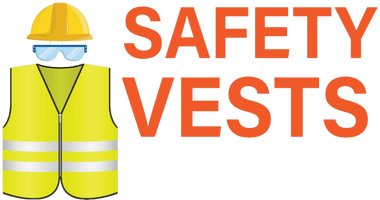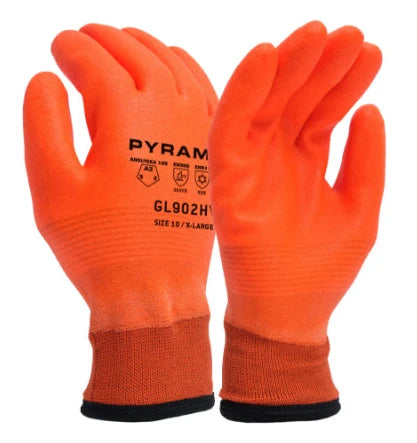Staying safe, warm, comfortable and at ease on the job won’t be a challenge anymore with our wide range of Safety Work Gloves collections. Cut resistant gloves are an essential safety item for any worker who is exposed to sharp objects on a daily basis. From medical professionals to industrial workers and beyond, these gloves are designed to protect against cuts and scrapes that could occur during the course of work.In the medical field, cut resistant gloves are essential for any worker who may come into contact with sharp objects. This includes surgeons and nurses, who may use scalpels and other sharp tools during the course of their work. These gloves are also used in the emergency room and other medical settings, where there is a high risk of cuts or scrapes from sharp objects.In industrial settings, these gloves are essential for anyone who works with heavy machinery and tools. This could include welders, mechanics, and construction workers, who often use sharp tools such as saws, knives, and other sharp objects while on the job. These gloves help to protect against cuts and scrapes that may occur while handling these tools.In addition, cut resistant gloves are also used in food production. For example, butchers and chefs wear these gloves to protect their hands from sharp knives and other tools used in their work.The material used in cut resistant gloves varies depending on the application. For medical professionals, for example, the gloves are often made from a combination of Kevlar and plastic, which offer superior protection against sharp objects. For industrial workers, the gloves are usually made from leather or other materials that offer strength and durability.Cut resistant gloves are essential for any worker who is exposed to sharp objects on a daily basis. These gloves offer superior protection against cuts and scrapes, and can help to prevent serious injury. They are available in a variety of materials and sizes, and can help to ensure a safe and productive working environment.
What is a Cut-resistant glove?
A cut-resistant glove is a type of safety glove designed to protect hands from cuts and lacerations, commonly used in environments where sharp tools, blades, or materials are handled. These gloves are made from high-strength materials such as Kevlar, Dyneema, stainless steel mesh, or other advanced fibers that can withstand sharp edges and reduce the risk of injury.
The cut resistance level of a glove is often rated according to standards such as the ANSI (American National Standards Institute) or EN (European Norms) rating systems, where higher levels indicate greater protection. Industries like food processing, construction, manufacturing, and glass handling often require workers to wear cut-resistant gloves to ensure hand safety while working with potentially dangerous objects.
What does ANSI cut level mean?
The ANSI cut level is a rating system developed by the American National Standards Institute (ANSI) to indicate the level of cut resistance in gloves and other protective materials. It measures how well a glove can withstand cutting hazards, helping users select appropriate hand protection based on the risk level in their work environment.
The ANSI cut levels range from A1 to A9, with higher numbers representing greater cut resistance:
- A1 to A3: Suitable for low-cut hazards, like handling small, lightweight materials.
- A4 to A5: Mid-level cut protection for moderate risks, common in construction and general industry.
- A6 to A9: High to extreme cut protection for heavy, sharp materials, such as glass, metal, and heavy machinery tasks.
This rating helps workers in industries like construction, manufacturing, and metalworking choose the right gloves to reduce injury risks from sharp objects.
What should you never do when you use cut-resistant gloves?
When using cut-resistant gloves, avoid using them for hazards they aren’t designed to protect against, such as punctures, impacts, or heat. They should not be used for tasks involving moving blades or heavy machinery, as they can get caught or fail to protect you from such high-risk scenarios. It's also important to ensure that the gloves fit properly, as loose gloves can reduce dexterity and lead to accidents. Never use gloves that are damaged, as they will not offer adequate protection. Additionally, avoid wearing cut-resistant gloves when wet unless they are specifically designed for wet conditions, and always clean them regularly to maintain their effectiveness. Following these guidelines will help ensure the gloves perform as intended and provide optimal hand safety.
Do cut resistant gloves have metal in them?
Yes, some cut-resistant gloves contain metal or metal-based fibers, typically in the form of steel, titanium, copper, or aluminum. These metal fibers are woven into the glove's fabric to enhance its cut resistance. Metal-infused gloves are particularly effective for heavy-duty tasks that involve sharp materials like glass, metal, or certain machinery. The metal fibers, often combined with other materials such as Kevlar, Dyneema, or Nitrile, create a durable and protective barrier against cutting hazards.
While metal-based gloves offer superior protection, they may be heavier or less flexible than those made from synthetic fibers alone. They also tend to be more expensive. However, metal-reinforced gloves are commonly used in industries like manufacturing, construction, and metalworking, where there is a high risk of cuts and abrasions'.
How many levels of cut-resistant gloves are there?
Cut-resistant gloves are rated based on the level of protection they offer, ranging from A1 to A9 according to the ANSI/ISEA 105 standard. A1 provides minimal protection, ideal for low-risk tasks, while A9 offers the highest level, suitable for environments with extreme cutting hazards. The levels represent the force required to cut through the glove material, starting at 200 grams for A1 and going up to 8,000 grams for A9. As the cut level increases, so does the glove's resistance to cuts, with higher levels designed for high-risk industries like manufacturing, construction, and metalworking. The choice of glove depends on the specific hazards present in the work environment.
How good are cut-resistant gloves?
Cut-resistant gloves are highly effective at protecting hands from cuts and abrasions, especially in environments where workers are handling sharp objects or materials. They are made from a variety of materials, including Kevlar, Dyneema, metal fibers, and nitrile, each offering different levels of protection based on the risk involved. While no glove can guarantee 100% protection against all cutting hazards, cut-resistant gloves significantly reduce the risk of injury. They come in various ANSI cut levels (A1 to A9), with higher levels offering stronger protection for more demanding tasks.
These gloves are commonly used in industries like construction, automotive, manufacturing, and food processing, where the risk of cuts from sharp tools, machinery, or materials is high. However, it's important to choose gloves with the appropriate cut level for the specific task at hand. While they provide excellent protection, they may not be suitable for tasks involving puncture hazards, high heat, or chemical exposure, unless specifically designed for those conditions.
Are cut-resistant gloves the same as regular gloves?
Cut-resistant gloves are not the same as regular gloves. While regular gloves offer basic protection from dirt, abrasion, and minor injuries, cut-resistant gloves are specifically designed to provide additional protection against sharp objects, preventing cuts and lacerations. They are made with special materials like Kevlar, Dyneema, or metal fibers, which are much stronger and more durable than standard glove materials. Cut-resistant gloves are ideal for tasks involving tools, machinery, or materials with sharp edges, making them suitable for high-risk industries like construction, manufacturing, and food processing. Regular gloves, on the other hand, may not provide sufficient protection in these environments.
Are cut resistant gloves washable?
Yes, many cut-resistant gloves are washable, but it's important to follow the manufacturer's care instructions to maintain their protective qualities and ensure longevity. Some cut-resistant gloves are made from materials like Kevlar, Dyneema, or steel fibers, which can typically withstand washing. However, improper cleaning methods, like using harsh detergents, hot water, or a dryer, can damage the glove's fibers and reduce its cut resistance.
To properly wash cut-resistant gloves:
- Check the Care Label: Always follow the manufacturer's guidelines for washing and drying to ensure you're maintaining the glove’s effectiveness.
- Use Cold or Lukewarm Water: High temperatures can damage the glove material. Wash in cold or lukewarm water to preserve the fibers.
- Mild Detergent: Avoid strong chemicals or bleach, which can break down the glove fibers and reduce their performance.
- Air Dry: It's best to air dry cut-resistant gloves rather than using a dryer, as heat can shrink or damage the material.
By properly washing and caring for your cut-resistant gloves, you can keep them in good condition, ensuring they continue to provide effective protection during use.
When should you wear cut resistant gloves?
You should wear cut-resistant gloves whenever you're handling sharp objects or materials that pose a risk of cuts or abrasions. These gloves are essential in environments where you work with sharp tools, like knives or box cutters, or materials such as metal, glass, and sheet metal. They're particularly important in industries like construction, manufacturing, automotive, and food processing, where sharp edges are common. Additionally, cut-resistant gloves are vital for warehouse workers handling packages, scrap metal, or glass, as well as for those working with heavy machinery or demolition tasks. Wearing these gloves helps protect your hands from injuries while maintaining dexterity and control during high-risk tasks.
























